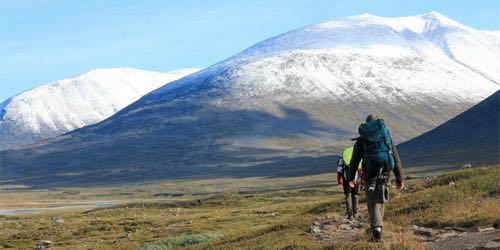
Hear about hiking the Kings Trail (Kungsleden) in Swedish Lapland as the Amateur Traveler talks to Agata from nullnfull.com about this northern and rugged portion of Sweden.
Agata says, “Lapland is all about nature and wilderness”.
Lapland is the “last real wilderness in Europe. You go to Lapland to enjoy nature, wilderness, silence, space. It is easy to reach. You can fly there from most European cities then ride a train and bus and in less than 24 hours you’re there and trek.” Agata has flown there from both Poland and Italy and it was very organized, the bus waits for the train, and it works “like a Swiss watch”.
Agata is recommending we trek one of 5 segments of the 400 km (240 miles) “King’s Trail” in about a week. If you can carry a 10kg backpack you can make the trip. With a series of mountain huts for shelter and resupply, you can travel with less gear. The huts have no electricity and no running water but there is always a guard. The rooms are dry and warm, with wood for a fire. Every 2-3 huts you can purchase food.
Agata recommends we start in the small town of Nikkaluokta to the town of Abisko. The trail passes the highest mountain in Sweden, Kebnekaise, and many people take a one day detour from the trail to climb the peak. The trail goes through tundra with no trees in sight and with snow on the mountains. Agata recommends the trek in August which is really Fall in the area. “Summer is Fall, fall is winter and winter is long”. As we walk we will see reindeer. “I remember one situation when I was having breakfast, I turned around and there was a huge reindeer watching me… face to face.”
The trail crosses the UNESCO World Heritage site Laponia. This area has been occupied continuously by the Saami people since prehistoric times.
subscribe: rss feed | Apple podcasts
![]()
right click here to download (mp3)
right click here to download (iTunes version with pictures)
Sponsor
![]()
DK Eyewitness Travel Guides – One of my favorite guidebook series
Show Notes
Null & Full
Guide to the King’s Trial (Kungsleden)
Lapland
Visit Swedish Lapland
Swedish Lapland
Kungsleden (King’s Trail)
Nikkaluokta
Kebnekaise
Singi
Kiruna
Abisko
Lapporten
Travel With Books
Community
Hello Chris.
I’m not selling or pitching anything. I just wanted to say thank you for Amateur Traveler. I’ve listened to dozens of episodes including some I’ve heard more than once. I started listening to the podcasts to gather information, I’ve kept listening because they are so entertaining.
My wife, 9 year-old son & I are starting a 9 month round the world trip in July 2015. Europe (Slovakia, Austria, Venice, Greece, Turkey) – East Africa (Kenya, Uganda, Rwanda) – South Asia (India, Nepal) – Southeast Asia (Thailand, Laos, Cambodia, S. Vietnam) – South America (Argentina, Bolivia, Peru). We’ll be taking our podcasts with us on long bus rides and flights.
Your podcasts are incredible! Thank you!
– Jason
I was sure I could top 20 DK Eyewitness Guides, but I guess I’m doing too good a job of throwing things out or giving them away. We do have a lot of guide books, and an incredible number of language books (for people who speak maybe one and a half languages) but not as many DK’s as I thought. Why two Italy? Don’t know. My wife and I had the same idea, I guess.
– Jim
- Get a universal plug adapter
- Get an eSim to be able to use your smartphone abroad.
- Search for Great Tours HERE
- Book Your Accommodation HERE
- Buy Travel Insurance
- Get a Car Rental
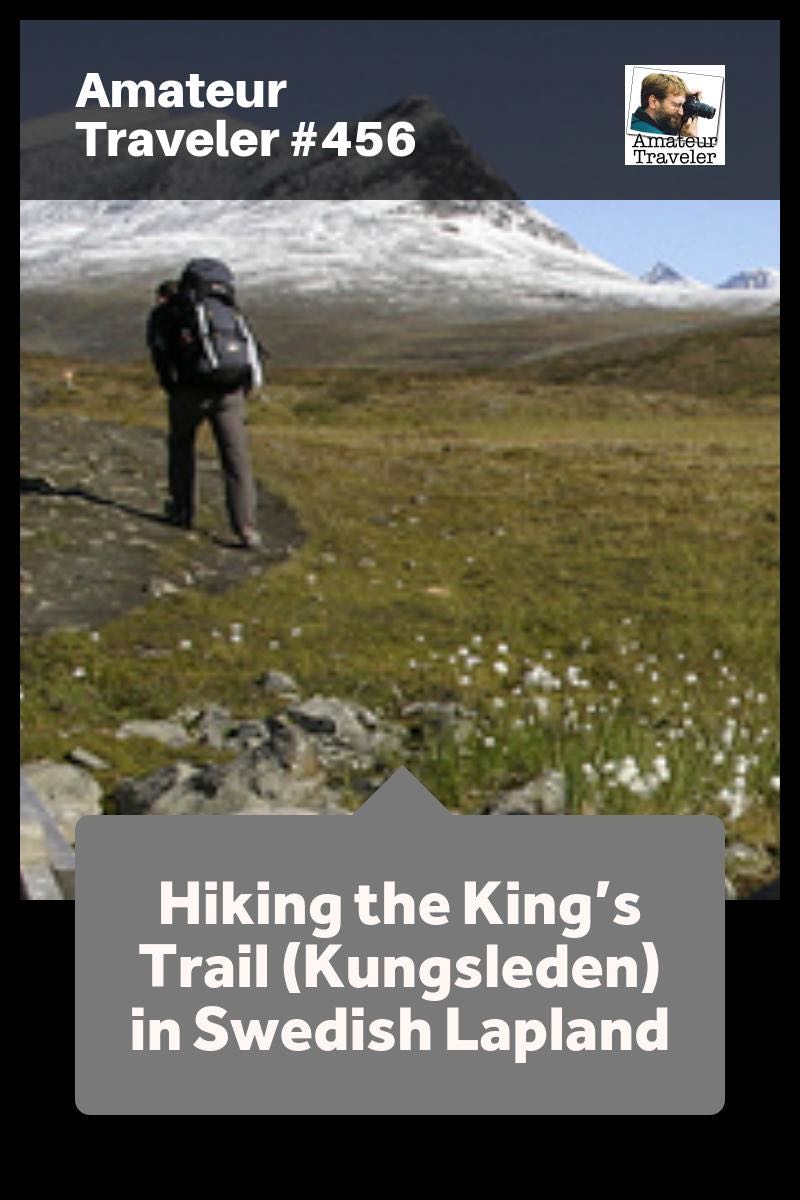
Transcript
Chris: Amateur Traveler: Episode 456. Today the Amateur Traveler talks about a hike through Tundra and reindeer, as we hike the Kings Trail in Swedish Lapland.
Chris Christensen: This episode of the Amateur Traveler is again sponsored DK Eyewitness travel guides. DK is one of my favorite travel guides; I have 25 of them myself. Learn more about this colorful and informative guidebook at dk.com.
subscribe: rss feed | Apple podcasts
Chris: Welcome to the Amateur Traveler. I’m your host, Chris Christensen. We will hear more from our sponsor later on, but first let’s hear about a rather unusual track. I would like to welcome to the show Agata, who is a blogger who blogs at nullnfull.com. You can see how to spell that in the show notes. Agata welcome to the show.
Agata: Thank you for having me here today.
Chris: You have come to talk to us about a portion of Sweden we have not talked about yet, which is Lapland.
Agata: Yes.
Chris: What is Lapland? Where would we find that on the map?
Agata: Lapland obviously is ethnic minority in Sweden, but it spreads from Norway to Sweden, Finland, and Russia. So, it’s more like, horizontal. You will find this Saami people in Norway, in Sweden and in some other countries too. It’s very, very interesting and particular.
Chris: And you used the word for that ethnicity, that I think most people haven’t heard. Could you repeat that one?
Agata: Saami people, with double-A.
Chris: Okay. And I had actually not come across that term until I ran into a journalist in Sweden, actually, earlier in the year. So, why should someone go to Lapland? It sounds like you are trying to tell us to go some place cold, to be honest with you.
Agata: Yes, and it is cold. But actually, there is very short and warm summer. So I think there is something to both, if you prefer cold or you prefer summer and warmth, you can find it there. But I would say that Lapland is all about the nature and wilderness. It is the last real wilderness in Europe, really, and you go to Lapland to enjoy nature, wilderness, silence, space. It all feels something really unique when you go there. And also because it is easy to reach, which I found pretty important in traveling. You can fly there from most European cities then ride a train and bus and in less than 24 hours, you are there on trek. So I fly there from both, from Italy and Poland and every time it was just perfectly organized. The bus was waiting for the train, etc. It works like in a Swiss watch.
Chris: What kind of itinerary would you recommend for Lapland? Where should we start and what should we see?
Agata: I would strongly encourage to walk on the so-called King’s Trail and what is called in Sweden, Kungsleden. The whole trail has more than 400km, but you can actually start your walk in five different places making it much shorter. In a week, I would say you are able to cover about 100km with no rush and quite easily. The trail is fit to all levels. I met families and retired people who walk there. I think each person who is able to carry like 10kg backpack can do it.
Chris: We have a lot of our North America audience. So we are talking about a 22 pound backpack and roughly a 240 mile trip. And you are doing a quarter of it, so about 60 miles.
Agata: Yes, in a week.
Chris: Where do we start first of all? You are picking out one segment for a week’s itinerary. Do have a favorite quarter of the King’s Trail?
Agata: Yes I do, and actually quite a few other people make it their own favorite and there is a reason for that. So I would start walk in Nikkaluokta. This is a very small village close to Killonga. You go by night train to Killonga; then you take the bus, and you are in Nikkaluokta the very same day. So, you start your walk and then you follow the trails to Kebnekaise. Actually this is so special because right there is the highest peak in Sweden, that is called Kebnekaise. What people normally do, is that they follow the track but then, they go for one day to climb the highest peak in Sweden and then go back and then they continue walk.
Chris: How tall is the highest peak in Sweden?
Agata: 22,097 meters and it is 6,882 feet. So it’s not that high but nevertheless, it’s covered with snow all year round. It’s starting at Nikkaluokta at Kaiser station; there is the largest mountain hut in the area. Then you follow through Singi, Sälka…
Chris: Before you follow on here, let’s pause just a little bit. Mountain hut, I’m not sure that everybody has a picture of what you mean by a mountain hut. In some places, a mountain hut serves you a hot meal and in some places a mountain hut is a mountain hut. I don’t know which we are talking about here.
Agata: In Sweden, this is very particular, and I think it makes the whole experience really amazing because the hut is really simple. There’s no running water, no electricity, but there is always a guard, a volunteer that stays there for like two weeks. And he keeps an eye on the whole hut. Inside what you have is dry and warm rooms and also there is wood that you can chop, and you can burn to heat the inside of the hut. And believe me or not, but this wood there is so dry that two sticks is more than enough to warm the whole hut for the whole night.
Chris: That’s one of the reasons why you are getting by with a lighter backpack is that you are still sleeping indoors.
Agata: Yes, but also every two or three huts, there is possibility to buy some food. There is no need to bring everything with you.
Chris: Excellent.
Agata: You need to have some cans or dry food for two days. But then you come to a place that you can buy quite easily something to eat. So, no worries.
Chris: Okay, excellent. Go on from where you were. I just needed to make sure we are on the same page there.
Agata: Sure, so Kebnekaise. Then you follow to Singi. This is the part of the trail that leads from East to West. In Singi, you turn to north. So you walk after that to Salka; you pass the Tjäktja pass. That is the highest point of all Kungsleden. And then you go practically down. So there is Tjäktja hut, there is Alesjaure hut, Abiskojaure, and then you finish your trail in Abisko in the north.
Chris: I’m picturing an alpine, lot of fur trees or some sort of evergreen trees.
Agata: No trees at all.
Chris: No trees at all? We’re up above the tree line because we are so far north.
Agata: Yes and this is also very particular because it’s Tundra. So, everything won’t grow, it’s very, very… just small. A couple of days you don’t see even one tree.
Chris: Which is why there is firewood in the huts because I’m not just going to find firewood?
Agata: Yes.
Chris: Okay, I’m catching on now.
Agata: All right. So, just when you cross from Alesjaure to Abiskojaure, that’s the first moment when you see the trees again.
Chris: So when I’m up on the mountain, how far am I seeing?
Agata: Actually, that’s the beauty of this trail is because this is very flat and the way it is organized that you follow the valley. So, what you get, as a result, is just pure beauty. Because on the left-hand side and right-hand side you have high mountains, and you are down there. If you go there in the middle of August, the beginning of September then you get absolutely breathtaking scenery. Because down there where you walk is still autumn, which means red and yellow colors, very vivid. But up there in the mountains it’s already covered with white snow. So, it’s not about like seeing very far because you are always in the valley. But what you see is actually breathtaking. From the highest point, as I said at Tjäktja pass, you see both valleys, and this is really spectacular, really beautiful.
Chris: Let’s take a break here and hear from our sponsor who is DK Eyewitness travel guides. I’d like to welcome back DK, and thank them for sponsoring the show. I certainly hope you will show your appreciation as they are helping get this show out. Not only did they sponsor the show but they also sent me five new guides. And I know that I should be more excited about the sponsorship than the guides but I do like these guide books. So I was just a little giddy when I saw the five new guides. And they sent me Seville and Andalucia, Mexico, Marrakesh, Morocco and a Top 10 guide to Buenos Aires, which we will be using when we fly to Buenos Aires tomorrow. Here again, I love the DK Eyewitness guides. I’ll have to say I went back in time a little bit when I opened up the one to Andalucia and opened up the street by street map of the city of Ronda. If you haven’t seen Ronda in Spain, it is spectacular, and they do a good job of capturing it. If you don’t believe me go to your nearest bookstore and open up the guide to Andalucia, look at Ronda and see if they don’t have you booking a plane ticket. Again, you can learn more about their guidebooks at dk.com. Please thank them for sponsoring the Amateur Traveler.
Now you’ve got us there in August, which we said is really fall there. So summer is fall; fall is winter. And what is winter?
Agata: Winter is long.
Chris: Winter is long.
Agata: Because it starts at the end of September and lasts until May. Actually to give you a picture, in the beginning of May you can still ski there.
Chris: Okay. Cross country ski?
Agata: Exactly. So either you will walk it in this summer or autumn. Both are very rewarding experiences.
Chris: You said we were also going to see the wildlife?
Agata: Yes, there is a couple of animals that for me was so amazing to see. First of all, reindeer.
Chris: If we had not gotten reindeer in a show about Lapland, I would have been very disappointed.
Agata: Indeed. If you walk it in the end of August, just as I usually do, you’ll get a couple of herds but not like thousands of them because what happens is that in the middle of August, Saami people bring the reindeer down. There is this whole ceremony, and it’s called this habit of bringing down the animals just to make sure that they are safe for winter time.
Chris: They have been grazing in the higher plateaus and mountains during the short summer time, and then they bring them down as the snow comes back?
Agata: Yes. But the point is that, obviously, they are not able to catch all of them. So the herds that you see are actually the ones that are left. They are quite a few, and actually they come to you quite close. I remember one situation that I was just sitting there, having my breakfast, and I’m turning around and there he is. This huge reindeer, watching me and I was like: “Whoa, this is it.” I mean, the wildlife there is just, wrap your hand and just touch it. So there quite possibly you will meet a reindeer, pretty face to face.
Chris: You said a large reindeer. How large is a large reindeer?
Agata: It was taller than me, right.
Chris: That’s what I figured, yeah.
Agata: So it was big.
Chris: I think of them being larger than what we see for deer and smaller than what we see for a moose but somewhere in that large range.
Agata: Yes, yes. You’re right.
Chris: Excellent. Are there other wildlife that you expect to see, or that’s a real highlight for this trip?
Agata: This is the highlight because it’s the easiest to spot, and they cross your path. You can be sure that sooner or later you will meet a reindeer. But I know that there are also bears there but I have never seen or spotted any of them.
Chris: And we don’t necessarily want the bears to cross our paths.
Agata: No, not necessarily.
Chris: Is there more to the experience that you would like to share?
Agata: Most of all, for me this was so special because the beauty of autumn Tundra is something really hard to describe but really worth it to see…
Chris: Of course I’m going to make you try and describe it.
Agata: Of course. So, for me, for example, it was so brilliant to wake up when sunrise and just immerse myself in total silence. And it’s possible right there. I mean, there is no interference of any kind. So the silence and maybe the sound of north wind is something that I really experienced there in nature. Even though this is not packed with animals, because the climate is harsh, you just go there and you just immerse yourself in silence and the space, the experience is really powerful of you being there, being a small person, surrounded by wilderness. That’s what this is all about, I think.
Chris: As I’m walking the trail, is it rocky, is it spongy as I’ve sometimes seen Tundra? What kind of terrain is it?
Agata: Terrain I would say is dirty paths. From time to time, it’s rocky but not excessively. But what is the whole beauty of perfect organization of Swedish country, no other country, in general, is that in spongy places, just as we said, there are some wooden paths. It is helpful because you don’t have to walk into water or any marsh, anything gloomy.
Chris: Is it well marked then? It sounds like it is in that part, at least.
Agata: It is very well marked. And also when you cross a stream, there are bridges constructed. So you can feel totally safe.
Chris: As we’re stopping every couple of days, and we’re getting or buying something to eat, that’s canned food, freeze dried food or something like that the usual hiking sort of food?
Agata: Yes.
Chris: There is no Swedish surprises here waiting for you?
Agata: No, it’s really high-quality mountain food. I would call it this way. But also it is well organized from the point of view of walker or trekker, because each mountain hut has a fully equipped kitchen. So, you can boil your water, you can even warm it to wash yourself. So there is no need to go into the freezing cold stream.
Chris: Or bringing a camp stove either then, it sounds like.
Agata: Yeah. You can feel safe also in terms of food and preparing meals.
Chris: Is there a possibility that the cabins will fill up? Do I need reservations or anything like that?
Agata: If you are a single trekker, you don’t need to inform in advance that you are coming. Only groups are kindly asked to book the place, but it’s mainly because they will keep, for example, one mountain hut only for a group so they could stay together. The huts fill up quite quickly, but I have never experienced any situation that there is no place for me as a trekker.
Chris: If this one fills up the next one is how far?
Agata: Like 10 kilometers, 12 kilometers.
Chris: A bit of a walk.
Agata: I did couple of times… I did two stages in one day, and it is possible for a fit person. No problem with that because as I said it’s flat. It’s only about the distance, not about the altitude or anything like that.
Chris: What’s going to surprise me about this hike?
Agata: For me, the main surprise was about how quickly I accommodated to what nature provides. Like after only two days, I went to sleep when it was getting dark, and I woke up when it was bright. It’s just amazing to observe yourself. If you leave behind all of these technologies and things that we are all used to every day, you’re just there, and you don’t need anything else. And I’ve discovered how little I need to feel alive and to feel happy. You just have your little backpack; you wake up when the sun rises and then you just walk for the whole day. It’s just going to the basics.
Chris: I just had the picture of me walking all day looking for a cell signal. We may not have the same mental picture here, I’m afraid. What’s one warning you would give about the trip?
Agata: I would say that a part of experiencing the King’s Trail–I would say there two other things that you should see. First is Killona. As a little town is very interesting because it is a relatively small town but it’s existence is strictly related to the ore mine. And actually the largest ore mine in the world. The climate is harsh; people created a very interesting community there because they are really highly related to each other.
Chris: What type of mine is it?
Agata: Iron ore mine. The whole town is there just because of the mine, all to this way.
Chris: Because of that I would think it would be more traditional Swedish rather than Saami, for instance.
Agata: Totally Swedish, yeah.
Chris: Okay.
Agata: Then the second thing that I would really highly recommend is Abisko; that’s a very small village. You have this mountain hut there, run by STS, the Swedish Tourism Organization. And actually Abisko is really beautiful because there is this national park there that covers also the lake and some parts of the mountains. But what it really is spectacular is something that is called The Lapland Door or [inaudible 00:20:22] in Swedish. There is a very weird and very beautiful formation of two peaks that are close together, and they are shaped in a door shape, so they called it Door to Lapland. And it’s really beautiful.
Chris: Excellent. And the whole trail is a UNESCO World Heritage site, as I recall you telling me.
Agata: Not the whole trail but this part of Lapland that you cross.
Chris: Okay got it. Before we get to my last, say four questions as we go to wrap this up, anything else we should know before we go?
Agata: In terms of luxuries, that you also find even there, in this total wilderness, is the sauna. And I think it is really particular, in terms of the whole experience. Because you go there when it’s dark already and like every second or every third mountain hut has it. I actually when you to go to information point you get a small booklet, and every mountain hut has it described so you know in advance where the sauna awaits you. A volunteer that is a warden there, he or she heats the sauna in the evening. So we go there when it’s total darkness outside. And what I liked most of this whole experience was the smell. Because obviously they use this very dry wood from the surroundings. So they get this wood from Sweden. They don’t import it from somewhere else and the smell of this very dry wood burned is something really special. Also, when you are heated already, and you go outside that is more or less around zero. If you go to swim in a stream or in a lake, this is just the moment that you feel totally alive. Really. So, I enjoyed it very much, as a whole experience. Also, you meet some people inside. This is the time for stories. I remember a lot of the volunteers that were working there were telling the stories about why they volunteered, how it is organized, what they like most and the stories that you just sit there and just listen to it in awe.
Chris: Do you remember one of the best stories?
Agata: I remember a story that really fascinated me was about organization. How they make sure that it works so efficiently. So actually if you are a warden you have to prepare your clothes and all that you need a year in advance.
Chris: Oh my goodness.
Agata: You put it in a huge plastic box with your name and all the data, in which hut are you going to be. And then it waits for winter season. In winter, they take this snowmobile and people from STF are the volunteers, just bring them to all mountain huts, just riding on snow. So, when next year you go there, your plastic box awaits you. But when you end your term there you put everything again in your plastic box, you close it and you wait for until next winter to have it transported back.
So the whole cycle takes three years, every year, from the moment that you put your clothes into the box until you get it again in your house. I found it pretty amusing.
Chris: Interesting.
Agata: Yeah.
Chris: You are standing in the prettiest spot in the whole trail. Where are you standing? What are you looking at?
Agata: For me it was Senegel mountain hut. This is the moment where you come from the east, and you merge with south-north trail.You are looking there at both the valley that goes north-south and the other one that comes from the east. I think that the mountains there are just really amazing because they are really, really old. In terms of geological formation, they are very old, and it makes them very dark. The feeling that I had was that if I was in the Lord of the Rings movie, really. Even though, it was, not New Zealand but you get this amazing feeling of just standing there in front of really, really old formations. So, to me that was it.
Chris: Okay. One thing that makes you laugh and say “Only in Lapland.”
Agata: Reindeer that is trying to steal your breakfast.
Chris: I think that is safe to say that is probably only going to happen to you in Lapland. Last two questions. Finish this sentence: You really know you are in Lapland, you really know you are on the Kings Trail, when what?
Agata: When you wake up in the morning, you go to the bathroom, and you find the water frozen. You have to crush it before you wash your hands.
Chris: And if you had to summarize the whole experience in just three words, what three words would you use?
Agata: Silence, wilderness, and beauty.
Chris: Excellent. Our guest again has been Agata. Where can people read more about your travels?
Agata: Obviously in my blog nullnfull.com or social media Facebook, Twitter and Instagram. It’s all Null and Full.
Chris: And we say “Null and Full.” Null, the letter N and Full. So nine letters to NullNFull.
Agata: Yeah exactly. I just wanted to share the news about my future project that I’m running, and I think it’s really exciting. So this March, we are starting with a huge project called travelwithbooks.com, and it’s basically the whole idea is that we will share one travel related quote a day and just encourage people to read more books. I invited 23 top bloggers and some writers. Just to give you a taste, I invited Dervla Murphy to join the project, Anthony Sattin and other writers that are famous. We are going to share one quote a day for 30 days with lovely pictures. And you are welcome to have a look. So travelwithbooks.com.
Chris: Excellent. Well, Agata, thank you so much for coming on the Amateur Traveler and sharing with us your love for Lapland.
Agata: That was a pleasure. Thank you.
Chris: In news of the community this week I heard from Jason, who said: I’m not selling or pitching anything. I just wanted to say thank you for Amateur Traveler. I listened to dozens of episodes including some I have heard more than once. I started listening to the podcasts to gather information. I have kept listening because they are so entertaining.
My wife, nine-year-old son and I are starting a nine month around the world trip in July 2015. Europe, Slovakia, Austria, Venice, Greece, Turkey. East Africa; Kenya, Uganda, Rwanda. South Asia; India, Nepal. Southeast Asia; Thailand, Laos, Cambodia, South Vietnam. South America; Argentina, Bolivia, Peru. We will be taking our podcasts with us on long bus rides and flights. Your podcasts are incredible. Thank you.
And Jason, I’m wondering why you are taking my podcast and not me. But thanks for writing. I had asked recently if anybody could top 20 DK Eyewitness guides and Jim wrote and said “I was sure I could top 20 guides, but I guess I’m doing too good a job of throwing things out or giving them away. We do have a lot of guide books and an incredible number of language books for people who speak maybe one and half languages. But not as many DK’s as I thought. Why two Italy? Don’t know. My wife and I had the same idea, I guess.”
Thanks Jim for that. And with that we will end this episode the Amateur Traveler. I’m not quite sure what the schedule will be for the next couple of weeks. We may skip a week as I’m on a boat off the coast of Argentina, but you will hear more about that later. If you have any questions, send me an email to [email protected] or better yet leave a comment on this episode at amateurtraveler.com. You can also follow me on Twitter @chris2x. And as always, thanks so much for listening.
Transcription sponsored by JayWay Travel, specialists in Central & Eastern Europe custom tours.
+Chris Christensen | @chris2x | facebook
One Response to “Hiking the King’s Trail (Kungsleden) in Swedish Lapland – Episode 456”
Leave a Reply
Tags: adventure travel, audio travel podcast, hiking, podcast, sweden, trekking

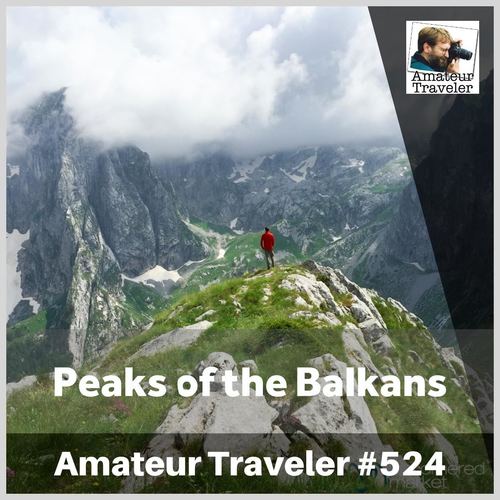 Hiking the Peaks of the Balkans (Albania, Kosovo, Montenegro) – Episode 524
Hiking the Peaks of the Balkans (Albania, Kosovo, Montenegro) – Episode 524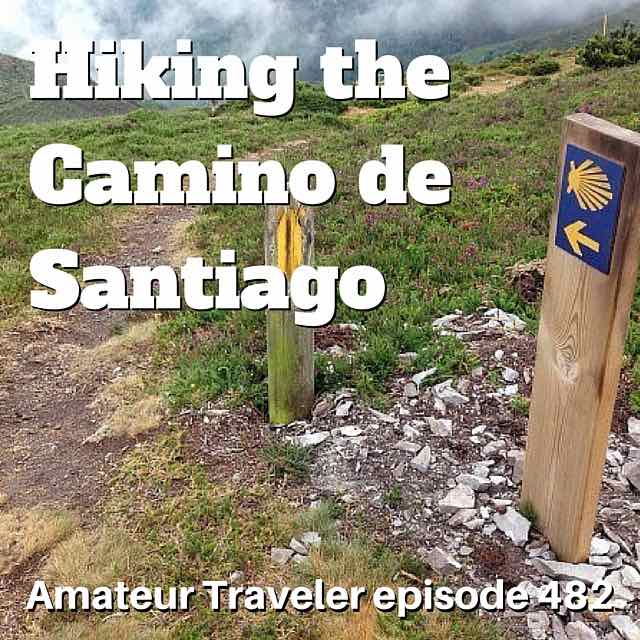 Hiking the Camino de Santiago in Spain – Episode 482
Hiking the Camino de Santiago in Spain – Episode 482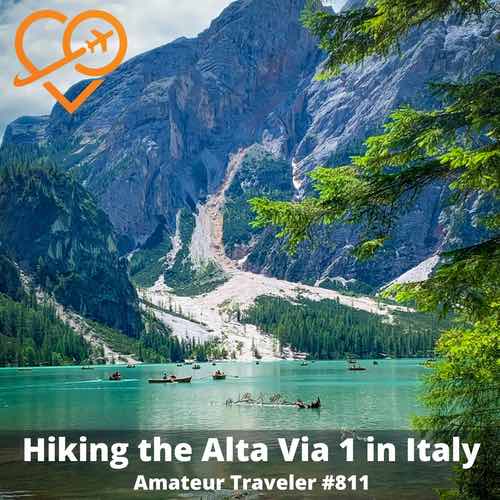 Hiking the Alta Via 1 in the Dolomites in Italy – Episode 811
Hiking the Alta Via 1 in the Dolomites in Italy – Episode 811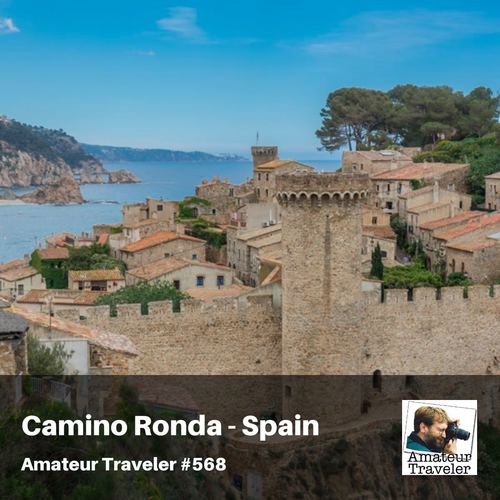 Hiking the Camino de Ronda in Northern Spain – Episode 568
Hiking the Camino de Ronda in Northern Spain – Episode 568

Alexander Idelmann
Says:September 2nd, 2016 at 2:31 pm
A great guide! I have taken the Kungsleden a few times while writing on my book on Lapland. If you are interested, it is located on Kickstarter at http://kck.st/2bB6lMu